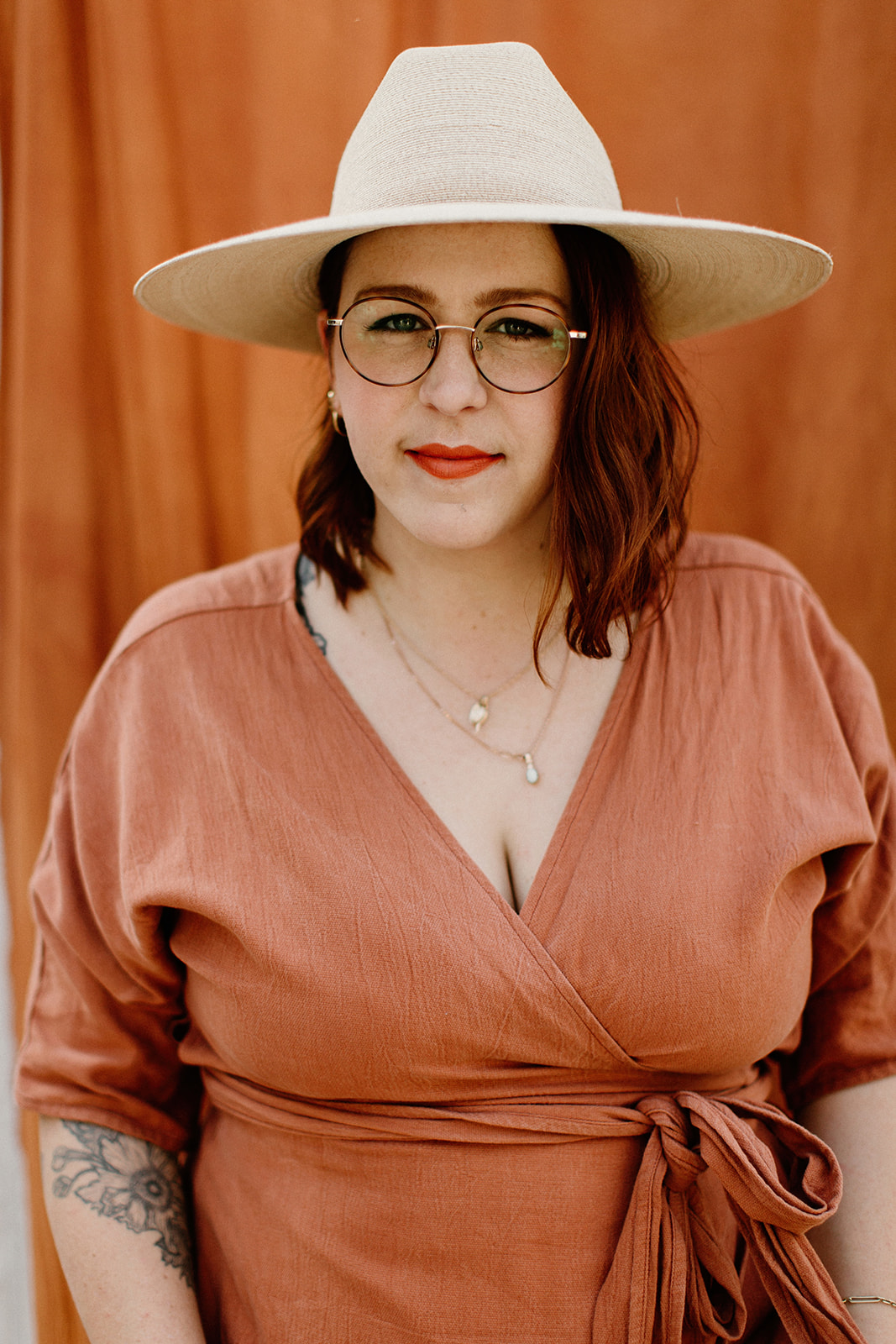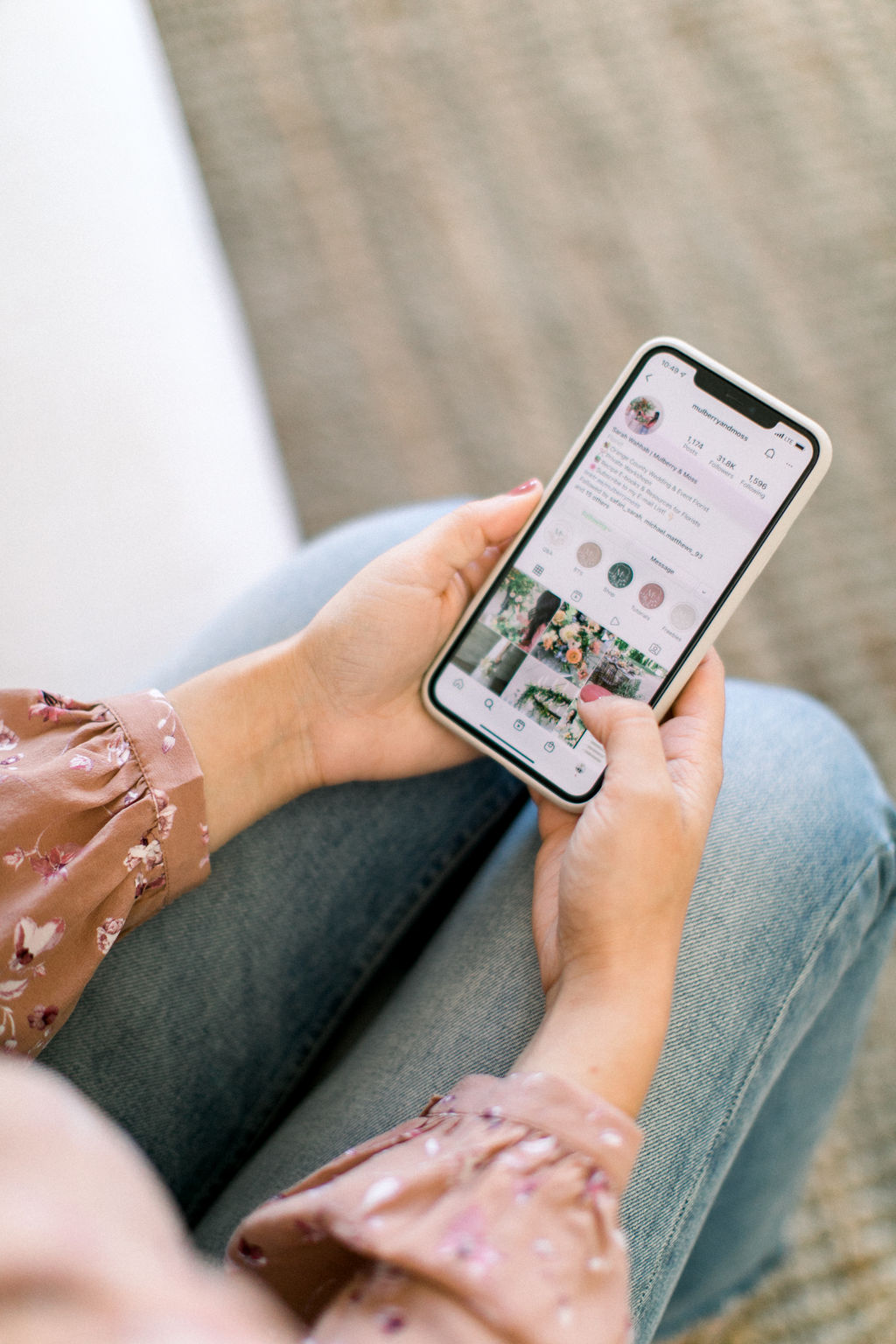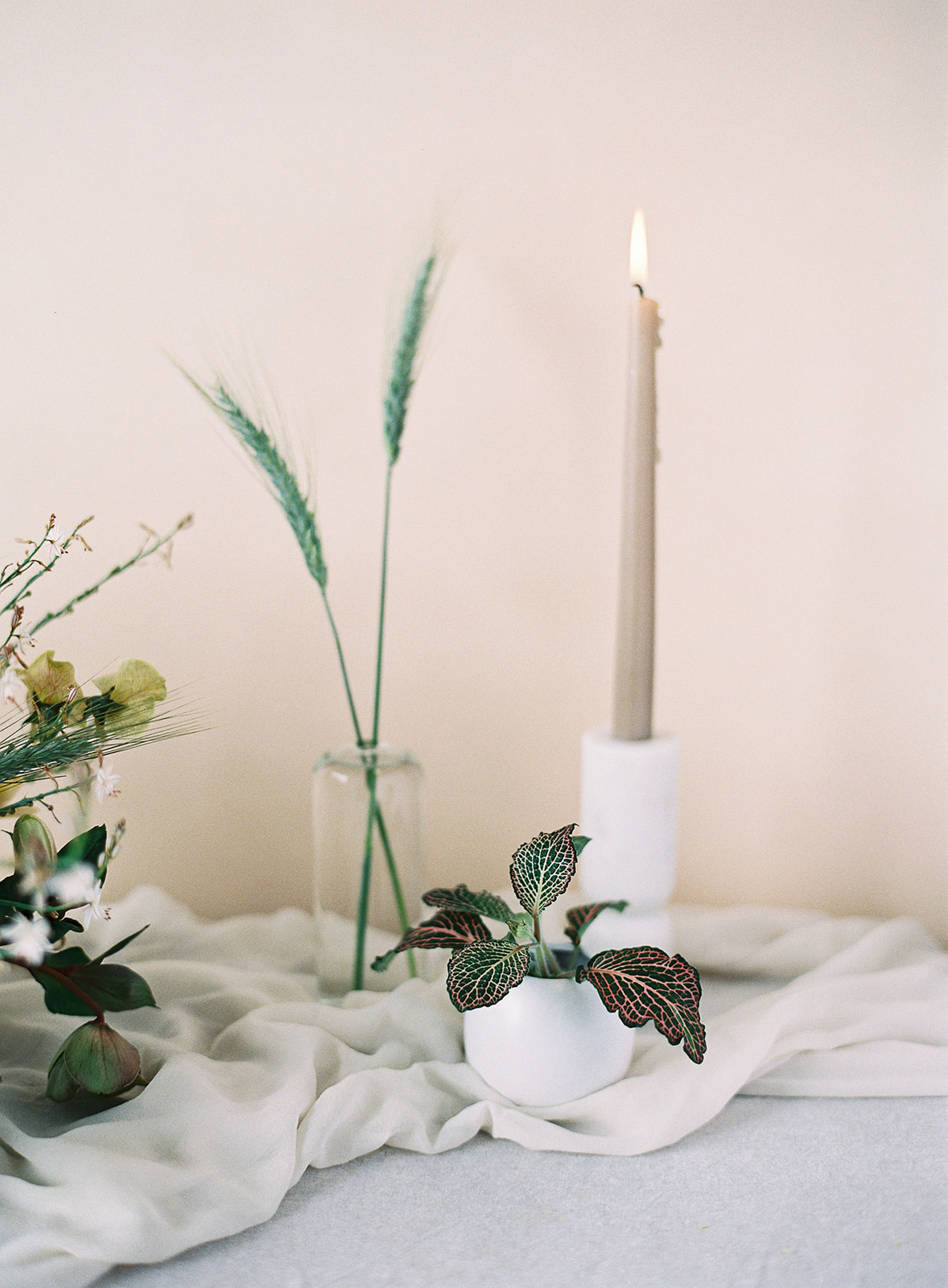How to Create Floral Proposals: A Guide for Wedding Florists and Wedding Floral Designers
Today I’m sharing about my process for creating floral proposals for wedding clients! For those of us who specialize in wedding floral design, these creative visual documents can sometimes make us feel like they are running our lives. They are a huge part of our job as wedding florists because they are the thing that sells our work, the key to us booking events and the concept within the proposal is where each new design begins. In this episode I’ll be answering questions like, what is a proposal? What purpose does it serve? What are the elements that should be included in every proposal? How much time should you spend on a proposal? And then I’ll share some strategies for how you can cut back the time in your life that you’re spending creating proposals. Whether you’re a pro at creating these visual documents or brand new to the selling process altogether, I know you’re going to find something useful in this episode. There is so much to cover, so let’s dive on in.
What is a Floral Proposal?
So, when I say floral proposal, what am I referring to exactly?
A floral proposal (or client proposal) is a document that is created to pitch a design to a client during the selling stage. Often times clients will gather multiple proposals or bids from different companies when in their decision stage, so because of this element of competition, it’s important to have a proposal format that will help you to stand out against other businesses, while giving the client a glimpse of what their experience will be like if they were to hire you.
What purpose does it serve?
A proposal serves as a selling tool where you present your creative ideas to a client, while also providing them an estimate or price quote for your services. Not every client is making their decision purely based on price, however it is a factor for most people in their decision, so pricing is one of the primary purposes of a proposal. The proposal will be the document that both you and the client will continuously update and refer to as a guide to keep you both on the same page throughout the design process.
Your proposal is your one chance to present your interpretation of your clients vision and let them know you understand exactly what they are looking for. You can do that through language, or through images. I think a mix of both is key. I usually spend a decent amount of time scanning Pinterest, Google, blogs and Instagram for the perfect images to include on my clients proposal. The more unique the brides vision is, the harder it can be to find images. This part alone of scanning for the perfect photos can sometimes amount to hours. But, this is one time investment that I truly believe does pay off most of the time.
I think the best floral proposals are the ones that take the clients vision, validate their ideas, and then improve upon them making them even more special and unique. Most clients will come to you having some idea of what they think they want, but there is always space to inject your own professional expertise into a design, and most clients will be fairly receptive to this, In fact, a lot of people actually prefer to trust an expert. I know that when I’m looking to hire someone to perform a service, like landscaping my backyard for example, I always have my own set of ideas, but I also am always open to a professional opinion because I know I’m not a professional landscape designer. Your client may not realize that a lot of images out there floating around n Pinterest have been done a million times. So I always try to take the opportunity to create something new and unique for each of my clients that hasn’t been done before. Maybe working with the same overall style and color palette, but tweaking some of the vase styles or candle holders to a style that’s a little more current. Or adding a deeper color hue to create depth or make a simple palette a little bit more sophisticated. There may be simple suggestions that you can make to improve upon an existing idea your client may have, and I also think taking this creative, thoughtful approach can create a more customized experience for your customer. They’ll be like, Oh, wow, this person actually wants to make my wedding unique and often times they will really appreciate that you put thought into it.
A proposal not only serves as a concept document for presenting ideas to the client, but will also become your roadmap for creating and producing the designs. So though a proposal can take several hours to create, it is an investment of time that will be useful to you down the road, in producing the event, as much as it will be useful to the client. That is, if the client does decide to move forward.
What elements should you include in a proposal?
The main elements that are usually included in a client proposal are the details of the event, like the date, location, timeline, day-of contacts, and client information, an overall concept or mood board, a design breakdown with pricing – which could be broken down into categories or individual line items, a pricing summary, and a payment schedule or payment terms. The design proposal will usually include a place for a signature where the client will agree to the design that’s been presented. Usually the proposal will be sent along with your service contract, which the client will also sign agreeing to the terms of your partnership.

Visual Concept or Mood Board
I think that arguably the most important component of a proposal is the visual component. As this is essentially your pitch to the client of what you plan to create for them, and it is a test of how well you can communicate back to them the vision that they have expressed to you, through visuals and descriptive language.
As far as the visual components, I like to begin with one page that shows the overall look, and conveys the mood and story of the day that will be woven together through the design. This could include images that show a certain style of architecture that mimics the venue, or images that portray a certain season like fruits growing in an orchard, or a certain feeling or ethos, like a couple enjoying a romantic picnic at sunset in a field of wildflowers. After establishing the overall mood through a mood board, I then like to break down the overall design concept a bit further by showing a mix of elements that will portray that story or feeling. I will create a color palette, playing to the colors in those original mood board images, and then I will reinforce that color palette with individual flowers or foliages that represent each of those colors in the palette. So this approach allows the client to see the overall design concept, and they can also start to visualize how the individual items and different design elements are going to work together to bring that to life. When presenting the individual flowers I plan to use, I try to avoid using any flowers that are too seasonally specific if I am not 100% certain they will be in season, and instead I stick to mainly reliable varieties during this stage, to avoid getting hopes up for something that may not be available. So I guess in terms of specific blooms, I play it more safe in this stage of the process. But I still like to show a mix of textures, sizes and shapes of flowers, and foliages that I believe will be a great fit for their wedding look.
Then I include a few images of arrangements or designs that show the composition. It’s important to me that these images are thoughtfully selected based on a number of factors – like the vessels used, the style of the image overall, it an outdoor tablescape or indoor, is it loose and airy or more compact, these should all play to the brides taste and the ethos of the event that you want to highlight.

What programs can you use to create proposals?
There are several different methods and programs that can be used to create a design proposal. You can use Powerpoint, Microsoft Word, Canva or there are even advanced softwares you can purchase that are specifically designed for florists and floral business owners. When researching different proposal softwares, you’ll find that most of them vary on the different features they include – some softwares like Honeybook and Dubsado handle contracts, payments, and client correspondence, while others like Curate and Details, are created specifically for floral designers and are more robust on the visual design and customization options. Some florists use two or three programs combined in their selling process. For example, you might use Honeybook to manage your contracts, calendar and correspondence, and create your proposals in Canva, Microsoft Word, or Excel. I will walk you through the programs that I use in my selling process later in this episode, and provide some resources for you to try them out, so if you’re looking for a program that will be the best fit, stay tuned to the end of the episode.
Check out my Floral Proposal Template for Canva!
How much time should you spend on a floral proposal?
One question I get asked often by other florists is, “how much time should I spend on a client proposal?” I’m going to spend a good chunk of time addressing this one because I think it’s such an important question.
As I mentioned at the beginning of this post, sometimes it can feel like proposals are running our lives. And that’s because they make up basically half of our job as floral designers, but also, depending on the season of the year we are in, they always seem to pose a challenge with time management and work/life balance. During the slow season, we are basically assembling new quotes non-stop because it’s a busy season for new wedding inquiries for the following year. And during our busiest event season, these proposals are still coming through and we’re juggling the sales side of our business along with planning, mock-up meetings, and logistics for the weddings we’re currently working on producing.
Because floral proposals can be so time consuming to create, naturally, figuring out a strategy for reducing hours spent on proposals is key to not disrupting the flow in our business and managing stress levels during these busy times.
And the general time that we spend on these floral proposals is not even the only question.
How Much Time Should I Spend On A Floral Proposal Before the Client Books?
One specific challenge that I think many florists face is the question of how much time should you spend on a floral proposal in the selling stage (meaning before the client has booked you), vs. after they’ve booked and locked in your services. It’s one thing to spend time on designing a wedding for a paying client, but when you’re still in the stage of trying to book the client and they haven’t committed yet, you’re essentially wagering your precious time spent on this proposal in hopes that they will move forward. And if they don’t, that can be a huge bummer if you’ve wasted hours on creating a beautiful custom design. Not only that, there’s the fear of your client taking that design to another florist and asking them to create something similar for a lower price. Many designers, once they’ve experienced any of these types of tough situations with a potential client, will naturally become very protective of the time and creative energy that they pour into proposals in the selling stage.
I will say that it is a delicate balance – how much time, thought and detail you put into a client proposal vs. not risking too much of your precious time and ideas – because while you do run the risk of not being hired, you also run the risk of not standing out if it’s not detailed enough.
It’s so important in the selling phase to really show the client what you’re capable of creating for them, so that they can visualize what hiring you would look like vs. hiring another florist. In my experience, sometimes a visually compelling proposal can be the sole deciding factor for certain brides. So I would definitely not advise that you skimp on the detail or water down your proposals in any way to save time.
How to Book Your Dream Clients by Creating a Beautiful Floral Proposal
To give you a real life example, I had one client who inquired because she said she really loved my work. She shared with me all of the details about her wedding in her questionnaire and so I created a proposal for her. Then she came back about a week later and she said she loved the proposal but ultimately decided that she was going to move forward with a florist that her planner recommended and was used to working with. Well, a few weeks went by and I actually heard from this Bride again. She came back and said, we were getting ready to book this florist that my planner had recommended, but I decided that our styles just didn’t align quite so well and your proposal kept sticking out to me because I really felt like you understood my vision. So we would like to move forward with you.
This is just one of many examples of clients who felt they were confident in hiring us because of the way we were able to visually translate their vision through our design proposal.
Canva Proposal Template for Florists

So then, how do you make sure your proposals are thoughtfully created, while also being careful and protective of your time and your creative ideas?
Here we go…
Time saving tips for Creating Proposals & Selling
1- Present your designs in an in person meeting.
This is a little bit of an old school method if you ask me, but some companies still do prefer to present designs in person rather than handing over a digital copy until the client has paid a deposit, to avoid the client taking those materials and sharing them with your competitors. Personally I think having to schedule in person meetings to present a very proposal is a bit counter productive if we are talking about time saving strategies, which is why I think this method is a bit outdated these days but if you want to be able to share really custom and compelling designs and that is part of your strategy, you could do it this way.
2- Focus on Overall Look & Feel
Personally, I like to create visually compelling proposals, but in the initial selling phase, I focus on the high level vision or the overall mood and vibe that I want to create, and stay away from creating specific designs until the client has decided to move forward and has paid their deposit. You can create a proposal that speaks to the client through a general mood and thoughtfully selected visuals, without getting too specific on design. For example, I will spend quite some time sourcing images that represent the flowers I plan on using and the style of the ceremony and reception designs, but I won’t sit and create a custom sketch of a very specific and unique Pergola design or a clever escort display. I will save those specific ideas for later in the process when we dive deeper into design, after the client has committed to working with me.
3- Streamline Your Floral Proposal & Sales Process
I think another strategy I’ve found to be effective in being smart with time management is just to streamline my proposal and sales process overall. I believe at some point in their business, every florist should focus on streamlining and reducing the proposal creation process to be as efficient as possible. Think of this as a way that you can cut back in any marginal areas that you might be spending time that could trimmed down and spent elsewhere. For example, at the bare minimum, you should have a template that you re-use to create your proposals, rather than creating each proposal from scratch. I’m sure they most of us have some sort of skeleton template that we work off of, but I still feel like it’s worth mentioning. So depending on what program you use to create yours, this could be as simple as saving a working copy of one of your proposals so that you can come back to it and use the same format again and again. If you don’t have a template of any kind, you should definitely think about carving out an afternoon to create a proposal template that you can use repeatedly – and one that you really love and feel proud of presenting.
4- Organize & Store Your Inspiration Images
You can also streamline your delivery process. There are many different elements that are included in the proposal – like the mood board, the line item breakdown, your contract, and even payment management, so if all of these things can be streamlined into fewer programs, that is always ideal. If you are using different programs to manage each of these different proposal components, that can eat up a lot of time, not only switching back and forth between programs but filing and delivering them all in an organized way. So problem solving this and figuring out ways to simplify and streamline your process to reduce the time spent in creating, managing, and delivering each proposal is something you should definitely prioritize as your business becomes busier and your volume of work increases.
5- Automate Your Client Screening Process
Another time saving strategy is to Automate your Client Screening Process
You can automatically filter out price shoppers and clients who are not a good fit by simply being intentional and thorough with your marketing through your website and creating informational documents to support you in the selling process. Think of this strategy as a way of cutting down the amount of proposals you’re creating to the ones that really matter and that you have a good chance of booking.
Be Intentional With Your Marketing
Your website, your Instagram, your marketing emails if you have an email subscriber list, these are all different touch points where your potential clients find you and learn about your brand. So with all of your content in each one of these areas, you want to be very strategic in the language you use, the images you share and the way you choose to represent your brand to act as a magnet for the right clients – or the ideal clients that you want to work with.
What are things that you want every inquiring client to know about your brand? Do you want to attract a more high end or luxury client? Do you want to produce work in a more natural, romantic style? Do you want to attract clients who value sustainable floristry? Do you love a client who is fun and laid back? Or do you want to Give a more formal, serious tone? Think of how you can you show your ideal clients, through language, imagery and branding, that you are their perfect fit?
Be Clear on Pricing
Another way to automate client screening in a sense is to be clear and open about your pricing and services. This is something that can not only help you screen clients to filter out ones who may not be the best fit, but also can save you time answering frequently asked questions about your company on anything from style to pricing and services. You can allow your website to do more of the work for you so that inquiring clients can find answers they are looking for before hitting the inquire button.
Think about how you can make your website more detailed, more clear and more direct, in order to guide your clients towards or away from hitting inquire based on their style, desires, wishes and price point. If you exchange communication with each new client during the selling phase – either via e-mail, phone, zoom, or in person – what are some things that you find yourself repeating with every new client? What are the questions that you ask every single time? This is all information that can be relayed or gathered through your website.
Create A Thorough Client Questionnaire
You can also create a more detailed and thorough questionnaire to automate the information collection part of the sales process. Instead of just collecting the clients name, wedding date, and a brief message on the inquiry form, consider including a longer survey to help you collect more information in an automated way. My questionnaire is lengthy, but it eliminates the step of having to verbally ask a million questions to every bride, or draft another email sending them a questionnaire as a separate document. Instead, all of the information I could possibly need about this lead is delivered straight to my inbox when the client inquires.
Not only does this automated questionnaire eliminate a step, it allows me to strategize and prioritize which weddings I invest time in creating proposals for. Because as soon as I receive an inquiry, I know everything about that wedding that I need to know – down to who the hired photographer and planner are, what styles of vessels they prefer, and what specific style of designs they are dreaming of.
If all of the information I need is there and I am loving the design direction, I can see that our styles and budget align, and this client seems like an excellent fit for me, I can proceed right away with creating a full design proposal.
Create a Pricing Guide PDF
However if the client fills it out quickly and doesn’t include a ton of detail, maybe I can see that they’ve included their date and not much else, I can assume that maybe they are just interested in seeing if I am available, or looking for general pricing info. So in that case, before beginning a fully detailed proposal, I will simply respond and let them know if I am available, and send them my pricing guide to look over. I will say, hey so and so, thanks so much for inquiring! I do have my date available and I am attaching our pricing guide so you can check out our minimums and learn a little bit more about our brand. If you feel like we would be a fit, let me know and I would love to learn more details about your wedding so we can create a custom quote.
I have my pricing guide linked on my website as well so that clients can download it themselves, just as an added buffer between clients and my inbox. I truly only want serious inquiries coming through, so I really want clients to be able to obtain all the information they need on their own to decide if we are truly a fit before reaching out to me. My pricing guide was created in Canva, and it basically just includes all of the info my wedding page includes – but in PDF format. So it has an about pages a services page that breaks down our service offerings, a bit about our process, like what the client experience looks like from booking to the wedding day, and information on how to move forward, such as a link to fill out the questionnaire, schedule a call, or whatever your desired next step is for them to take.
The main difference and purpose of a pricing guide is to provide pricing information. If you prefer not to list pricing on your website, this is a way to share your pricing more discreetly with serious inquiring clients. It is also a tangible thing that you can send to clients to provide general information, so that you don’t have to spend as much time typing out correspondence to every single client. You can use this document to send to planners as well, as a way to connect with planners that you want to work with.
Check Out This Pricing Guide Template
So, to recap the automation point, being direct and intentional in your marketing approach, having a thorough, automated questionnaire, and having a well-designed Pricing Guide will act as a support system, doing a lot of the work for you in filtering through potential clients and will sort of act as a funnel that will guide only the right clients to your inbox.
…
In Conclusion…
So, in summary, while there are some ways to shorten the time you spend on proposals such as using a template or software, I do think that in some ways spending time on a proposal is important if you want to really get your vision across to your dream clients and stand out from your competitors. But there are plenty of ways to save time in your proposal process overall. And if you’re smart and selective about which inquiries you want to pursue and which ones you should risk spending the time on creating custom proposals for, you will find yourself spending a lot less time on proposals overall, and you’ll just be focusing on the ones that are really worth it.
I hope that this makes sense and gives you some new perspective to consider when approaching client inquiries. For me, it’s really about being clear and up front in your marketing to filter and screen your clients as best you can to attract only the right ones, and then it’s about looking over the inquiries I receive and deciding whether the client is in a stage where they are simply looking for general information that I can deliver quickly through my pricing guide PDF, or is this client serious and ready to receive a fully detailed proposal and if so, is it a wedding that I really want to pursue?
Programs and Templates For Floral Proposals
Okay, I told you that I would share the programs I use to create my proposals. Since early 2018, I’ve been using a software designed for floral designers called Details Flower Software. I love this software and it has been a total game changer in building out proposals and keeping my events organized. It not only serves as a proposal creation tool, it stores all of my event details in one place, it has a recipe creation tool so that I can build recipes in the software and it gives me my total stem counts so that I can easily send my wholesale order to my wholesaler. The software even has certain wholesale partners that you can send your wholesale orders to directly through the software. It also allows me to manage my inventory, houses my event contract, and makes managing payments super easy by allowing clients to click a link and pay their deposit or balance through an online portal. It is a dream software for florists and it runs about $150 per month. They have a free 30 day trial so if you’re interested in trying it out, I will put a link for you below.
Use my code MULBERRY and save $50 off your first two months of Details Software!
Before I was able to invest in a software, I used a proposal template that I created myself in Excel. After I began my online shop a couple of years ago, I realized that a proposal template was such a need and so I revamped my old version and created a new template in Canva that includes everything I would include if I were still using a template for my proposals today. You can find it in my online shop!






add a comment
+ COMMENTS